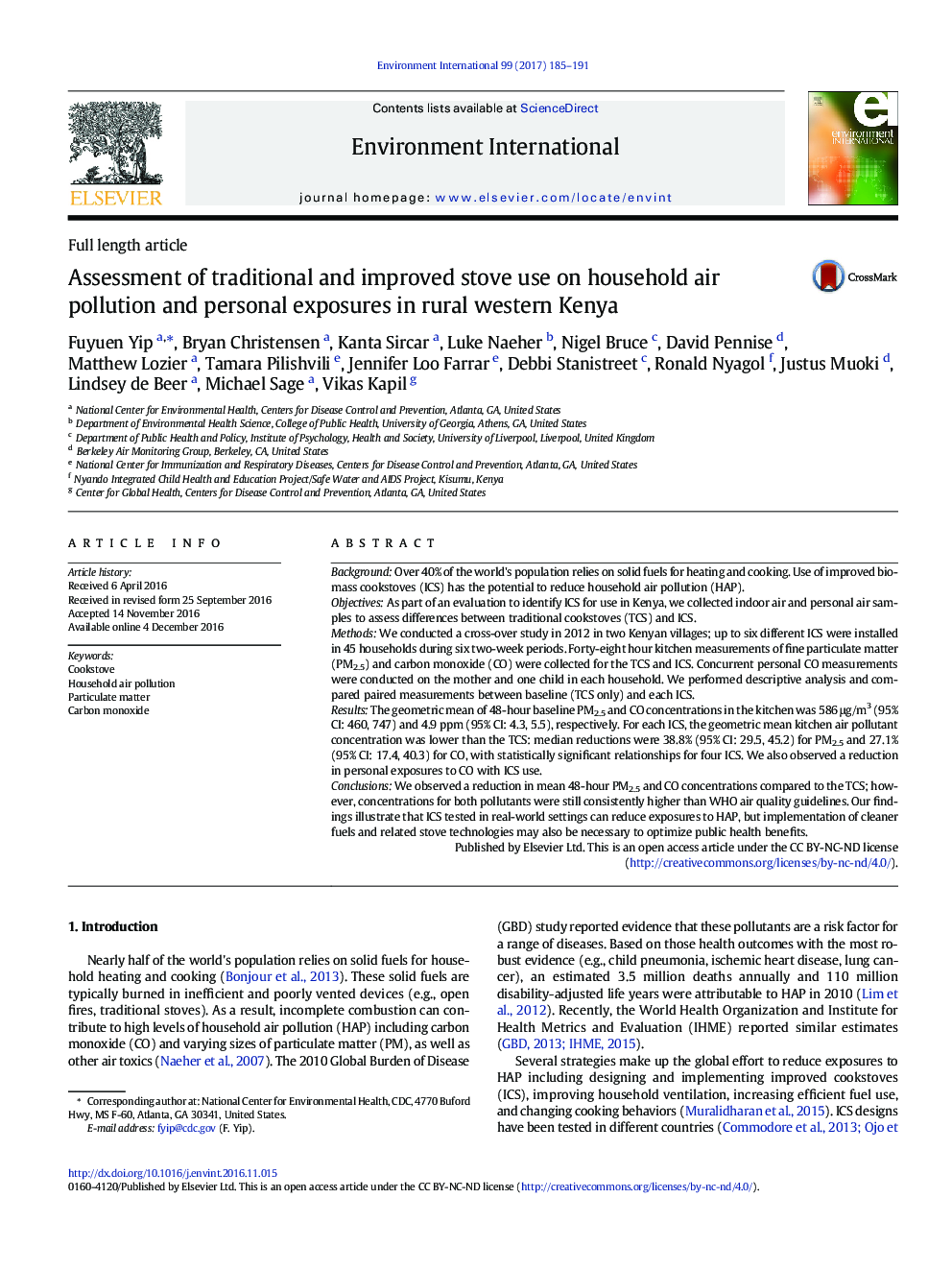| کد مقاله | کد نشریه | سال انتشار | مقاله انگلیسی | نسخه تمام متن |
|---|---|---|---|---|
| 5748408 | 1619031 | 2017 | 7 صفحه PDF | دانلود رایگان |
Assessment of Traditional and Improved Stove Use on Household Air Pollution and Personal Exposures in Rural Western Kenya
- We examined kitchen and personal concentrations of fine particulate matter (PM2.5) and carbon monoxide (CO) for six different improved cookstoves (ICS).
- Mean 48-hour PM2.5 and CO concentrations for ICS were reduced compared to TCS, but still exceeded WHO air quality guidelines.
- Multiple factors (e.g., kerosene use, stove stacking, fuel moisture, acceptability) contributed to heterogeneity in our results.
BackgroundOver 40% of the world's population relies on solid fuels for heating and cooking. Use of improved biomass cookstoves (ICS) has the potential to reduce household air pollution (HAP).ObjectivesAs part of an evaluation to identify ICS for use in Kenya, we collected indoor air and personal air samples to assess differences between traditional cookstoves (TCS) and ICS.MethodsWe conducted a cross-over study in 2012 in two Kenyan villages; up to six different ICS were installed in 45 households during six two-week periods. Forty-eight hour kitchen measurements of fine particulate matter (PM2.5) and carbon monoxide (CO) were collected for the TCS and ICS. Concurrent personal CO measurements were conducted on the mother and one child in each household. We performed descriptive analysis and compared paired measurements between baseline (TCS only) and each ICS.ResultsThe geometric mean of 48-hour baseline PM2.5 and CO concentrations in the kitchen was 586 μg/m3 (95% CI: 460, 747) and 4.9 ppm (95% CI: 4.3, 5.5), respectively. For each ICS, the geometric mean kitchen air pollutant concentration was lower than the TCS: median reductions were 38.8% (95% CI: 29.5, 45.2) for PM2.5 and 27.1% (95% CI: 17.4, 40.3) for CO, with statistically significant relationships for four ICS. We also observed a reduction in personal exposures to CO with ICS use.ConclusionsWe observed a reduction in mean 48-hour PM2.5 and CO concentrations compared to the TCS; however, concentrations for both pollutants were still consistently higher than WHO air quality guidelines. Our findings illustrate that ICS tested in real-world settings can reduce exposures to HAP, but implementation of cleaner fuels and related stove technologies may also be necessary to optimize public health benefits.
Journal: Environment International - Volume 99, February 2017, Pages 185-191
